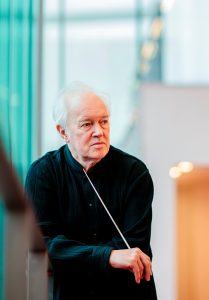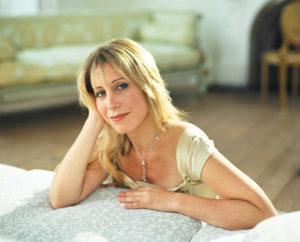Edo de Waart and the San Diego Symphony Give a Winning Account of Rachmaninoff’s Second Symphony
Edo de Waart, San Diego Symphony’s esteemed Principal Guest Conductor, led the orchestra in a probing, beautifully detailed account of Sergei Rachmaninoff’s Symphony No. 2 in E Minor Friday at San Diego Civic Theatre. An imposing, hour-long work composed between 1906 and 1908, Rachmaninoff’s Second Symphony does not make its way into contemporary symphonic programming as frequently as Gustav Mahler’s Eighth and Ninth Symphonies—written at the same time—but like these Mahler works, the Second Symphony marks the culmination of the Romantic era symphony.
By 1908, Arnold Schoenberg had already started to explore atonality in his Second String Quartet, and in 1910 Igor Stravinsky’s first revolutionary orchestral ballets appeared, changing forever the way European classical music approached tonality, meter, and orchestration. Like Czar Nicholas II in his ornate St. Petersburg palace, Rachmaninov’s Second Symphony encased a luxurious musical way of life on its way out.Rachmaninoff’s Second Symphony requires a massive orchestra, supplies a cornucopia of lush themes throughout, and progresses as if time were no object. The opening movement, for example, is as long as many a complete Haydn four movement symphony. The orchestration frequently showcases the orchestra’s lowest voices, from the dark themes in the contrabasses that open the work to the rich, sonorous chorales of the trombones and tuba in the spacious scherzo. This characteristic reminded me of hearing Russian Orthodox choirs with their astoundingly dark, low basses undergirding the men’s voices.
Edo de Waart paced the Second Symphony well—he actually shaved four minutes from its typical hour duration—and he elicited a consistently glowing sonority from the orchestra, even at full volume, a trait that was evident from the very first time he conducted the San Diego Symphony before becoming its Principal Guest Conductor. For example, in the Allegro molto, the work’s vibrant scherzo, de Waart shaped lithe, buoyant textures that allowed the brass-tinged fanfare themes to shine without overpowering the ensemble. In the lush Adagio, he coaxed Rachmaninoff’s richest, nostalgia drenched themes from the strings and woodwinds without a hint of indulgence. From start to finish, the orchestra played at the top of its game, giving this demanding work both the power and the sophisticated lyricism it demands.
Argentine pianist Ingrid Fliter gave a charged, technically astute account of Mozart’s Piano Concerto in A Major, K. 488. Written to impress cultured Viennese audiences as the
composer’s reputation grew in his adopted city, this typical three movement Classical concerto offers ample display without ostentation. I was impressed with Fliter’s expressive musical line in the slow middle movement, an ingratiating Siciliano in a minor mode.John Adams’ The Chairman Dances smartly opened the concert, its infectious minimalist ostinatos filling the cavernous Civic Theatre with eager expectation. Edo de Waart charmed winning accounts of Adams’ clever imitations of popular dance tunes from the 1940s, and the orchestra’s vibrant, rhythmically crisp performance made the best possible case for this work that is related to the composer’s opera Nixon in China, but is a separate composition that appeared prior to the opera’s completion. The Chairman of the title is, of course, China’s former head of state Mao-Tse Tung, whom President Richard Nixon visited in 1972.
This concert was presented by the San Diego Symphony on Friday, March 10, 2023, at San Diego Civic Theatre in downtown San Diego. It will be repeated in the same venue on March 11.

Ken Herman, a classically trained pianist and organist, has covered music for the San Diego Union, the Los Angeles Times’ San Diego Edition, and for sandiego.com. He has won numerous awards, including first place for Live Performance and Opera Reviews in the 2017, the 2018, and the 2019 Excellence in Journalism Awards competition held by the San Diego Press Club. A Chicago native, he came to San Diego to pursue a graduate degree and stayed.Read more…


